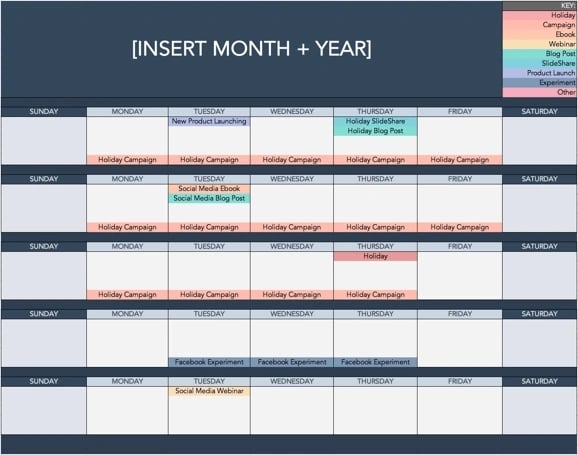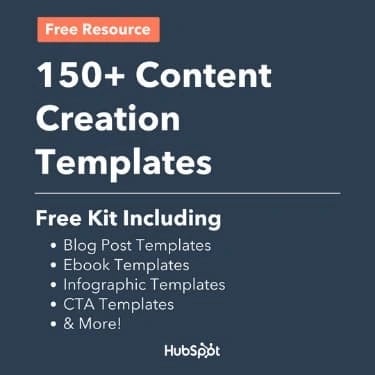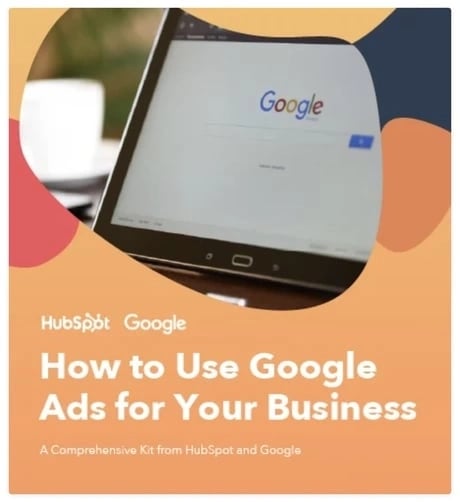As a millennial marketer, I can tell you quite a bit about the internet — we practically grew up together!

Not only has a lot changed about the internet since I was an elementary schooler but it’s also changed how we shop, making online marketing crucial for businesses.
As of 2024, there are 2.71 billion online shoppers, about a third of the world’s population. This online shift in shopping and buying behaviors underscores the need for a strong digital presence, where tools like HubSpot’s drag-and-drop website builder become essential in crafting an impactful online strategy.
So, offline marketing can’t be your only strategy for driving sales because you need to meet audiences where they’re already spending time: on the internet. Enter digital marketing — in other words, any form of online marketing. If you’re curious about the ins and outs of online marketing, you’ve come to the right blogger. I’m here to answer your questions about all things digital marketing. Keep reading to learn more.
- What is digital marketing?
- Why is digital marketing important?
- Types of Digital Marketing
- What does a digital marketer do?
- Inbound Marketing vs. Digital Marketing: Which is it?
- Does digital marketing work for all businesses?
- How to Do Digital Marketing
- Digital Marketing Examples
So, how do you define digital marketing today?
What is digital marketing?
Digital marketing, also called online marketing, refers to all marketing efforts that occur on the internet. Businesses leverage digital channels such as search engines, social media, email, and other websites to connect with current and prospective customers. This also includes communication through text or multimedia messages.
A seasoned inbound marketer might say inbound marketing and digital marketing are virtually the same thing, but trust me when I say there are some minor differences.
In conversations with marketers and business owners in the U.S., U.K., Asia, Australia, and New Zealand, I’ve learned a lot about how those small differences are being observed across the world.
How does a business define digital marketing?
At this stage, digital marketing is vital for your business and brand awareness. It seems like every other brand has a website, and if they don’t, they at least have a social media presence or digital ad strategy.
Don’t believe me? Well, our 2024 State of Marketing Survey found that Social media is the highest ROI marketing channel and will see the most growth in 2024.
Digital content and marketing are so common that consumers now expect and rely on it as a way to learn about brands.
Because digital marketing has so many possibilities, you can get creative and experiment with a variety of marketing tactics on a budget.
Overall, digital marketing is defined by using numerous digital tactics and channels to connect with customers where they spend much of their time: online.
The best digital marketers have a clear picture of how each digital marketing campaign supports their overarching goals.
And depending on the goals of their marketing strategy, marketers can support a larger campaign through the free and paid channels at their disposal.
A content marketer, for example, could create a series of blog posts that generate leads from an ebook.
A social media marketer might help promote those blogs through paid and organic posts on the business’s social media accounts, and the email marketer could create an email campaign to send those who download the ebook more information on the company.
I’ll talk more about these specific digital marketers in a minute.
Why is digital marketing important?
Digital marketing helps you reach a larger audience than you could through traditional methods and target the prospects who are most likely to buy your product or service. Additionally, it’s often more cost-effective than traditional advertising and enables you to measure success on a daily basis and pivot as you see fit.
There are a few major benefits of digital marketing:
- You can focus your efforts on only the prospects most likely to purchase your product or service.
- It’s more cost-effective than outbound marketing methods.
- Digital marketing evens the playing field within your industry and allows you to compete with bigger brands.
- Digital marketing is measurable.
- It’s easier to adapt and change a digital marketing strategy.
- Digital marketing can improve your conversion rate and the quality of your leads.
- You can engage audiences at every stage with digital marketing.
Let’s dive deeper.
1. You can focus your efforts on only the prospects most likely to purchase your product or service.
If you place an advertisement on TV, in a magazine, or on a billboard, you have limited control over who sees the ad.
Of course, you can measure certain demographics — including the magazine’s typical readership or the demographic of a certain neighborhood — but it’s still largely a shot in the dark.
Digital marketing allows you to identify and target a highly-specific audience with personalized and high-converting marketing messages.
For instance, you might use social media targeting to show ads to a certain audience based on variables like age, gender, location, interests, networks, or behaviors.
Alternatively, you might use PPC or SEO strategies to serve ads to users who’ve shown interest in or searched for specific keywords related to your product, service, or industry.
Ultimately, digital marketing helps you conduct the research necessary to identify your buyer personas and refine your strategy to ensure you’re reaching prospects most likely to buy.
2. It’s more cost-effective than outbound marketing methods.
Digital marketing helps you track day-to-day campaign performance, so you know what channels are performing well and which aren’t, helping you optimize your campaign budgets for high ROI.
The same can’t be said for traditional forms of advertising. It doesn’t matter how your billboard performs — it still costs the same, even if it doesn’t convert.
Plus, with digital marketing, you have complete control over where you choose to spend your money. Perhaps you spend money on design software to create high-converting Instagram content rather than paying for PPC campaigns.
A digital marketing strategy allows you to pivot continuously, ensuring you never waste money on channels that don’t perform well.
By and large, digital marketing is a more cost-effective solution and provides unique opportunities to ensure you get the most bang for your buck.
For instance, if you work for a small business with a limited budget, you might try investing in social media, blogging, or SEO – three strategies that can give you high ROI even with minimal spending.
3. Online marketing evens the playing field within your industry and allows you to compete with bigger brands.
If you work for a small business, it’s likely difficult for you to compete with the major brands in your industry, many of which have millions of dollars to invest in campaigns.
Fortunately, there are plenty of opportunities to outrank the big players through strategic digital marketing initiatives.
For instance, you might use long-tail keywords to create high-quality content that ranks on search engines. Search engines don’t care which brand is the biggest, but it does care about prioritizing content that resonates best with target audiences.
4. Digital marketing is measurable.
While traditional advertising can be helpful for specific goals, its biggest limitation is measurability.
This is one of the biggest benefits of digital marketing, as it can give you a start-to-finish view of all the metrics that matter to your company — including impressions, shares, views, clicks, and time on page.
Unlike most offline marketing efforts, digital marketing allows marketers to see accurate results in real-time.
If you’ve ever put an advertisement in a newspaper, you’ll know how difficult it is to estimate how many people flipped to that page and paid attention to it. There’s no surefire way to know if that ad was responsible for any sales at all.
On the other hand, with digital marketing, you can measure the ROI of pretty much any aspect of your marketing efforts.
Here are some examples:
Website Traffic
With digital marketing, you can see the exact number of people who have viewed your website’s homepage in real-time by using digital analytics software available in marketing platforms like HubSpot.
You can also see how many pages they visited, what device they were using, and where they came from, amongst other digital analytics data.
This intelligence helps you prioritize which marketing channels to spend more or less time on based on the number of people those channels drive to your website.
For example, if only 10% of your traffic is coming from organic search, you know that you probably need to spend some time on SEO to increase that percentage.
With offline marketing, it can be difficult to tell how people interact with your brand before they interact with a salesperson or make a purchase.
With digital marketing, you can identify trends and patterns in people’s behavior before they’ve reached the final stage in their buyer’s journey, meaning you can make more informed decisions about how to attract them to your website right at the top of the marketing funnel.
Content Performance and Lead Generation
Imagine you’ve created a product brochure and posted it through people’s letterboxes — that brochure is a form of offline content. The problem is that you have no idea how many people opened your brochure or threw it straight into the trash.
Instead, imagine you have that brochure on your website. You can measure exactly how many people viewed the page it’s on, and you can use a form to collect the contact information of those who downloaded it.
It’s twofold: you measure how many people engage with your content and generate qualified leads when people download it.
Attribution Modeling
An effective digital marketing strategy combined with the right tools and technologies allows you to trace all of your sales back to a customer’s first digital touchpoint with your business.
We call this attribution modeling, and it allows you to identify trends in the way people research and buy your product, helping you to make more informed decisions about what parts of your marketing strategy deserve more attention, and what parts of your sales cycle need refining.
Connecting the dots between marketing and sales is hugely important.
According to LinkedIn, 87% of sales and marketing leaders say collaboration between sales and marketing enables critical business growth, but misalignment between both teams can damage financial performance.
If you can improve your customer’s journey through the buying cycle by using digital technologies, then it’s likely to reflect positively on your business’s bottom line.
5. It’s easier to adapt and change an online marketing strategy.
A lot of work goes into developing a marketing strategy. Generally, you will follow through with that strategy until completion, allow it to take effect, and then judge its results.
However, things do not always go according to plan. You may realize halfway through that a calculation was off, an assumption was incorrect, or an audience did not react how they were expected to.
Being able to pivot or adjust the strategy along the way is highly beneficial because it prevents you from having to start over completely.
Being able to change your strategy easily is a great benefit of digital marketing. Adapting a digital marketing strategy is a lot easier than other, more traditional forms of marketing, like mailers or billboard advertising.
For instance, if an online ad isn’t delivering as expected, you can quickly adjust it or pause it to yield better results.
6. Online marketing can improve your conversion rate and the quality of your leads.
As digital marketing makes it simpler to measure your marketing efforts, this makes improving your conversion rate simpler as well. Being able to measure the effectiveness of each tactic helps you develop better strategies.
Continuously refining your methods improves your conversion rate. Investing in online marketing ensures that everything is optimized for the highest amount of conversions.
Additionally, all leads do not offer the same value for your business. Digital marketing allows you to target a specific audience that will yield higher-quality leads that are more likely to become customers.
Connecting your business with the most valuable leads will directly improve your conversion rate.
7. You can engage audiences at every stage with digital marketing.
It’s essential to begin engaging your audience as early as possible. Making a connection at the first stage of the buyer’s journey helps push the lead through the customer funnel.
Using digital marketing allows you to accomplish that from start to finish and at every point in between.
Online channels allow you to follow the entire buying journey of your customers. Understanding and analyzing how customers are move and operate is important for converting leads.
Digital marketing allows you to track them through that process. And, even if they don’t convert in the early stages, it at least helps ensure they have made a connection with your business.
Types of Digital Marketing
- Search Engine Optimization (SEO)
- Content Marketing
- Social Media Marketing
- Pay Per Click (PPC)
- Affiliate Marketing
- Native Advertising
- Marketing Automation
- Email Marketing
- Online PR
- Inbound Marketing
- Sponsored Content
- Search Engine Marketing (SEM)
- Instant Messaging Marketing
Here’s a quick rundown of some of the most common digital marketing tactics and the channels involved in each one.
1. Search Engine Optimization (SEO)
This is the process of optimizing your website to “rank” higher in search engine results pages, thereby increasing the amount of organic (or free) traffic your website receives.
The channels that benefit from SEO include websites, blogs, and infographics.
There are a number of ways to approach SEO in order to generate qualified traffic to your website. These include:
- On-page SEO: This type of SEO focuses on all of the content that exists “on the page” when looking at a website. By researching keywords for their search volume and intent (or meaning), you can answer questions for readers and rank higher on the search engine results pages (SERPs) those questions produce.
- Off page SEO: This type of SEO focuses on all of the activity that takes place “off the page” when looking to optimize your website. “What activity not on my own website could affect my ranking?” You might ask. The answer is inbound links, also known as backlinks. The number of publishers that link to you, and the relative “authority” of those publishers, affect how highly you rank for the keywords you care about. By networking with other publishers, writing guest posts on these websites (and linking back to your website), and generating external attention, you can earn the backlinks you need to move your website up on all the right SERPs.
- Technical SEO: This type of SEO focuses on the backend of your website, and how your pages are coded. Image compression, structured data, and CSS file optimization are all forms of technical SEO that can increase your website’s loading speed — an important ranking factor in the eyes of search engines like Google.
For a real-life example on how to successfully implement SEO into your digital marketing strategy, check out our case study on Canva here:
2. Content Marketing
This term denotes the creation and promotion of content assets for the purpose of generating brand awareness, traffic growth, lead generation, and customers.
Want to learn and apply content marketing to your business? Check out HubSpot Academy’s free content marketing training resource page.
The channels that can play a part in your content marketing strategy include:
- Blog posts: Writing and publishing articles on a company blog helps you demonstrate your industry expertise and generates organic search traffic for your business. This ultimately gives you more opportunities to convert website visitors into leads for your sales team.
- Ebooks and whitepapers: Ebooks, whitepapers, and similar long-form content helps further educate website visitors. It also allows you to exchange content for a reader’s contact information, generating leads for your company and moving people through the buyer’s journey.
- Infographics: Sometimes, readers want you to show, not tell. Infographics are a form of visual content that helps website visitors visualize a concept you want to help them learn.
- Audio or visual content: Television and radio are popular channels for digital marketing. Creating content that can be shared online as a video or heard on the radio by listeners can greatly broaden your potential audience.
Stumped? Download 150+ content creation templates by clicking below:
3. Social Media Marketing
This practice promotes your brand and your content on social media channels to increase brand awareness, drive traffic, and generate leads for your business.
If you’re new to social platforms, you can use tools like HubSpot to connect channels like LinkedIn and Facebook in one place.
This way, you can easily schedule content for multiple channels at once and monitor analytics from the platform as well.
On top of connecting social accounts for posting purposes, you can also integrate your social media inboxes into HubSpot, so you can get your direct messages in one place.
The channels you can use in social media marketing include:
- Snapchat
Many marketers will use these social media platforms to create a viral campaign. Partnering with a popular content creator or taking part in a trend that resonates with a wide audience is a viral marketing strategy.
The purpose is to create something shareworthy in the hopes that it will organically spread across a social media channel.
Don’t know how to get started with social media marketing? Download our free social media content calendar to get your social strategy up and running.

4. Pay Per Click (PPC)
PPC drives traffic to your website by paying a publisher every time your ad is clicked.
One of the most common types of PPC is Google Ads, which allows you to pay for top slots on Google’s search engine results pages at a price “per click” of the links you place. Other channels where you can use PPC include:
- Paid ads on Facebook: Here, users can pay to customize a video, image post, or slideshow, which Facebook will publish to the news feeds of people who match your business’s audience.
- Twitter Ads campaigns: Here, users can pay to place a series of posts or profile badges to the news feeds of a specific audience, all dedicated to accomplishing a specific goal for your business. This goal can be website traffic, more Twitter followers, tweet engagement, or even app downloads.
- Sponsored Messages on LinkedIn: Here, users can pay to send messages directly to specific LinkedIn users based on their industry and background.
PPC can be hard to grasp at first, so we’ve created a beginner-friendly guide to get you started. Download it below:
5. Affiliate Marketing
This is a type of performance-based advertising where you receive a commission for promoting someone else’s products or services on your website. Affiliate marketing channels include:
- Hosting video ads through the YouTube Partner Program.
- Posting affiliate links from your social media accounts.
This is part of the relatively new wave of influencer marketing. Creating a campaign using influencers can be a highly effective form of affiliate marketing. Finding the right content creators can take your digital campaign to the next level.
6. Native Advertising
Native advertising refers to advertisements that are primarily content-led and featured on a platform alongside other, non-paid content.
BuzzFeed-sponsored posts are a good example, but many people also consider social media advertising to be “native” — Facebook advertising and Instagram advertising, for example.
7. Marketing Automation
Marketing automation refers to the software that automates your basic marketing operations. Many marketing departments can automate repetitive tasks they would otherwise do manually, such as:
- Email newsletters: Email automation doesn’t just allow you to automatically send emails to your subscribers. It can also help you shrink and expand your contact list as needed so your newsletters are only going to the people who want to see them in their inboxes.
- Social media post scheduling: If you want to grow your organization’s presence on a social network, you need to post frequently. This makes manual posting a bit of an unruly process. Social media scheduling tools push your content to your social media channels for you, so you can spend more time focusing on content strategy.
- Lead-nurturing workflows: Generating leads, and converting those leads into customers, can be a long process.You can automate that process by sending leads specific emails and content once they fit certain criteria, such as when they download and open an ebook.
- Campaign tracking and reporting: Marketing campaigns can include a ton of different people, emails, content, webpages, phone calls, and more. Marketing automation can help you sort everything you work on by the campaign it’s serving and then track the performance of that campaign based on the progress all of these components make over time.
8. Email Marketing
Companies use email marketing as a way of communicating with their audiences. Email is often used to promote content, discounts and events, as well as to direct people toward the business’s website.
The types of emails you might send in an email marketing campaign include:
- Blog subscription newsletters.
- Follow-up emails to website visitors who downloaded something.
- Customer welcome emails.
- Holiday promotions to loyalty program members.
- Tips or similar series emails for customer nurturing.
Learn more about email marketing with our free guide:

.png)

